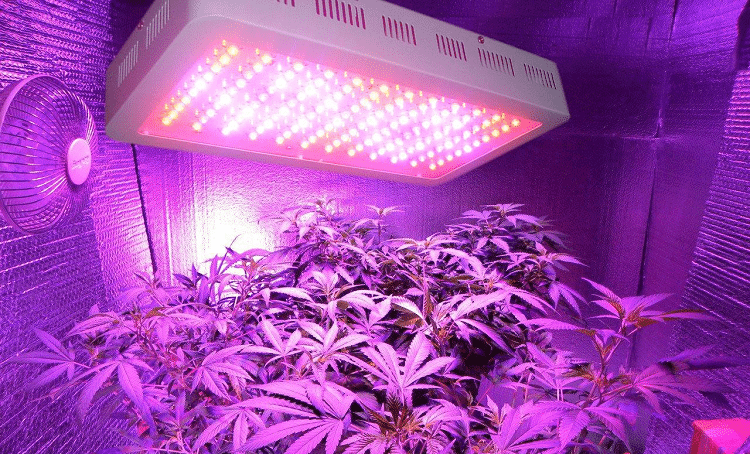There’s never been more interest in cultivation with legalization in Canada. Here’s how to choose the best lights for your indoor growing operation.
The lighting setup you choose is going to be primarily dictated by how much space you have to use. In fact, we can pretty much break this down to two general categories – growing in closets, or having an entire room available to devote to grow space.
Growing In The Closet
A closet grow restricts your options, but it isn’t impossible. You’re basically looking at two options – a Compact Fluorescent Light (CFL), or an LED light.
If you’re on a tight budget or are a complete beginner, just go ahead and start shopping for CFLs right now without looking at any other light types. Everything else is either too big or too expensive. A CFL is about the size of a standard light bulb and sits in a base the about the size of a standard table lamp. They’re by far the most inexpensive option, and they’re the ideal size for a closet grow.
So what’s the downside of CFLs? They have the lowest wattage output of any grow light, which means growth cycles are slow (at least 3 months per plant) and yields are small. Depending on the dimensions of the closet, it may also be tricky to position a set of reflectors properly.
If you’ve got a little more cash to throw around, you might look into LED lights as an alternative. LEDs that are capable of enough power to sustain a grow are a relatively new technology. They’re very small, they don’t produce much heat, and they’re capable of changing colors to maximize the different growth cycles of the plant. The major problem is that they’re very expensive compared to CFLs, and if the system fails it isn’t as simple as buying a new bulb — you’ll have to repair or replace the entire system. The almost complete lack of heat can also be an issue in humid climates, where a little heat output is beneficial to keep too much moisture from accruing and mold from ruining your plants. If you live in a humid area, you’re also looking at the extra expense and hassle of a dehumidifier running constantly.
Growing In A Room
With some more space to spread out, your options are greatly increased. Now you can start looking into full-size fluorescent lights, high-intensity discharge lights, and plasma lights.
Full-sized fluorescents are usually referred to as T5s, in reference to their size and shape (tubular, 5/8 of an inch). There were T8s and T12s at one time, but they’re considered obsolete now. These lights require either a ceiling fixture (similar to the ones used in offices) or setting up a stand that they can hang from. They’re the most inexpensive of the larger-sized options as they don’t put out much heat and the bulbs last for a very long time.
High-intensity discharge (HID) lights are a little more complicated (and expensive). They’re usually geared to replicate natural sunlight during one of the plant’s two development stages — blue for initial growth and red for the flowering stage. If you’re on a budget, they’re probably not the best choice. They have the biggest and most expensive bulbs, and they also put out the most heat of any system — constant air conditioning will be a requirement unless it’s the dead of winter.
Light-emitting plasma is the newest thing on the growing scene. Like LED lights, they can change colors on the fly and there’s no bulbs to replace. But like LED lights, they’re among the most expensive systems on the market. Potentially these could end up being the best overall grow light option, but they’re so new that the jury is still out as to whether they’re worth the significant extra expense.
Rolling It All Up
If you’ve never done any growing before, it’s best to start with one CFL light and one plant in some closet space while you learn the ropes. It’s a small initial investment and it’s almost impossible to burn your house down this way. What you learn from these initial experiments will help inform your decisions for future expansion. Light systems can be tough to offload if you get the wrong one, so it’s best to start small, go slowly and be sure about what you’re doing.

